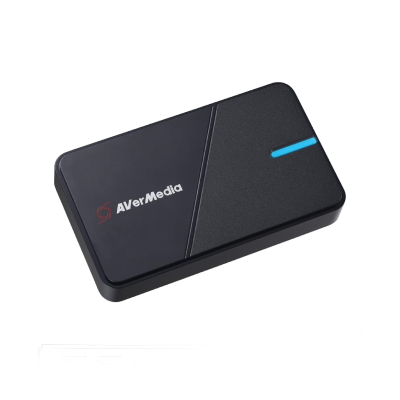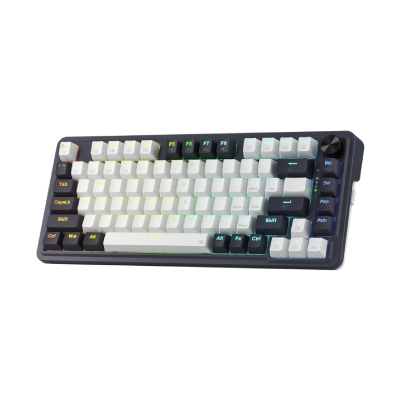Getting started with OBS can be a bit overwhelming for new streamers. With so many features and settings, knowing where to begin is often the hardest part. This guide is here to help, offering 10 practical tips tailored for beginners. These insights will help simplify your OBS journey, allowing you to focus more on your content and less on technical challenges.
- Use the Auto-Configuration Wizard
Start with the OBS Auto-Configuration Wizard to automatically set up the best streaming settings based on your hardware and internet speed.
When you first start using OBS, the Auto-Configuration Wizard is an invaluable tool that simplifies the setup process. It assesses your hardware and internet speed to automatically suggest the optimal streaming and recording settings, including resolution, bitrate, and frame rate. This feature is particularly useful for beginners, as it eliminates the guesswork and technical overwhelm, providing a solid and customized foundation for your streaming setup.
- Leverage Profiles and Scene Collections
In OBS, Profiles and Scene Collections are essential tools for managing various streaming setups efficiently. Profiles allow you to save your streaming settings, including encoder configurations and output settings, which you can switch between based on different streaming requirements or platforms. Scene Collections, on the other hand, enable you to create and switch between different sets of scenes and sources, perfect for streamers who broadcast diverse content or want to maintain separate setups for gaming, chatting, and more.


- Implement Hotkeys for Efficiency
Setting up hotkeys in OBS can significantly enhance your streaming efficiency by allowing instant control over various actions without interrupting your broadcast. For instance, you can assign a hotkey for quickly muting your microphone during unexpected interruptions, or for switching scenes when transitioning from gameplay to a chatting session with your viewers. Additionally, hotkeys are invaluable for solo streamers who need to manage the stream seamlessly while actively engaging in their content, enabling actions like starting/stopping recording or streaming with a simple keystroke.

- Optimize Audio with Filters
Audio quality is a critical aspect of streaming, and OBS's audio filters can greatly enhance your stream's sound. Filters like Noise Suppression help eliminate background noise, ensuring your voice is clear and prominent. The Compression filter can balance the audio levels, preventing sudden spikes in volume and maintaining a consistent output. Additionally, the Gain filter allows you to adjust the overall loudness of your audio source, making it easier for your audience to hear you without having to adjust their volume settings frequently.

- Monitor Performance with Stats
OBS includes a Stats panel that provides real-time data on your stream's performance, which is critical for making on-the-fly adjustments. High CPU usage might indicate the need to lower your encoding settings or reduce the complexity of your scenes. If you're experiencing dropped frames, this could signal an issue with your internet connection, prompting a bitrate adjustment. Monitoring frame rate inconsistencies can also suggest the necessity for hardware upgrades or settings optimization. Regularly checking these stats helps you maintain a smooth and high-quality stream by identifying and resolving issues as they arise.


- Utilize Studio Mode for Previews
Studio Mode in OBS is a powerful feature for enhancing the professionalism of your stream. It allows you to preview and tweak scenes and sources before they go live to your audience, ensuring that transitions are smooth and elements are correctly positioned. This mode is particularly useful for making adjustments to complex scenes or when adding new elements like overlays or widgets. Using Studio Mode, you can make real-time edits without disrupting the viewing experience, allowing you to manage your stream dynamically. It's an essential tool for streamers who prioritize a polished and seamless broadcast.

- Integrate Browser Sources for Interactivity
Browser sources in OBS open up a world of possibilities for stream interactivity and dynamic content. You can add elements like chat windows directly into your stream, allowing you to interact with your audience in real-time. Donation tickers, subscriber alerts, and social media feeds can also be integrated as browser sources, adding a professional and engaging touch to your broadcasts. For instance, using a service like Streamlabs or StreamElements, you can set up custom alerts that pop up on your stream whenever you receive a new follower or donation. Similarly, tools like Nightbot can be displayed in your stream to moderate chat or run automated messages. These browser-based elements not only enhance the visual appeal of your stream but also keep your audience engaged and involved.
- Regularly Update OBS
This may be a controversial one but for a new streamer regular updates not only bring new features and enhancements but also fix bugs and improve overall stability and performance. By enabling automatic updates or regularly checking for new versions, you ensure that you’re always using the most efficient, secure, and feature-rich version of OBS.
- Balance Bitrate and Resolution
Achieving the best streaming quality involves finding the right balance between bitrate and resolution. A higher resolution demands a higher bitrate to maintain clarity, but it should be set within the limits of your and your viewers' internet speeds to avoid buffering issues. Experimenting with different combinations in various streaming situations can help you find the sweet spot for a clear, smooth broadcast without alienating viewers with slower connections. Check out what’s a perfect bitrate for your stream in What’s a Perfect Bitrate for Your Stream

- Backup Your Settings
Regularly backing up your OBS settings and profiles is a precautionary step every streamer should take. It safeguards your configurations against software issues or data loss and simplifies transferring to a new system or recovering from technical problems. OBS allows you to export your settings easily, ensuring that your personalized setup can be quickly restored when needed.
Backing up your OBS settings is a straightforward process. In OBS, simply go to File in the top menu, then choose Export and select Profile or Scene Collection depending on what you want to backup. This action will save a file to your chosen location, which can be used to restore your settings later. To restore these settings on the same or a different machine, you would follow a similar process, going to File then Import, and selecting the saved file. This ensures your customized setup is always within reach, even when switching devices or recovering from technical issues.
As you embark on your streaming adventure, these 10 tips will help you navigate the initial complexities of OBS. Remember, the best way to learn is by doing, so don’t be afraid to experiment with different settings and features. Each adjustment brings you one step closer to an OBS setup that perfectly complements your streaming style. Keep exploring, and you'll find your stream becoming smoother and more professional with each broadcast.



